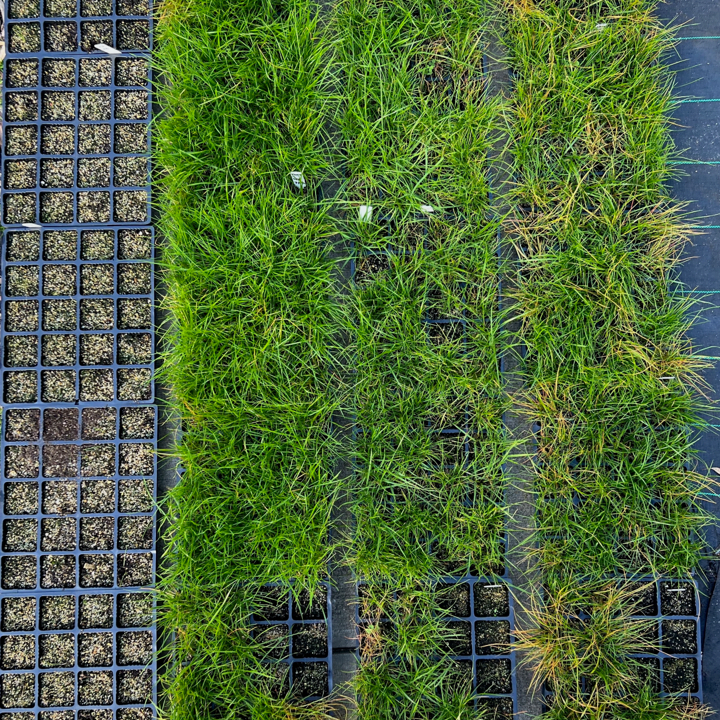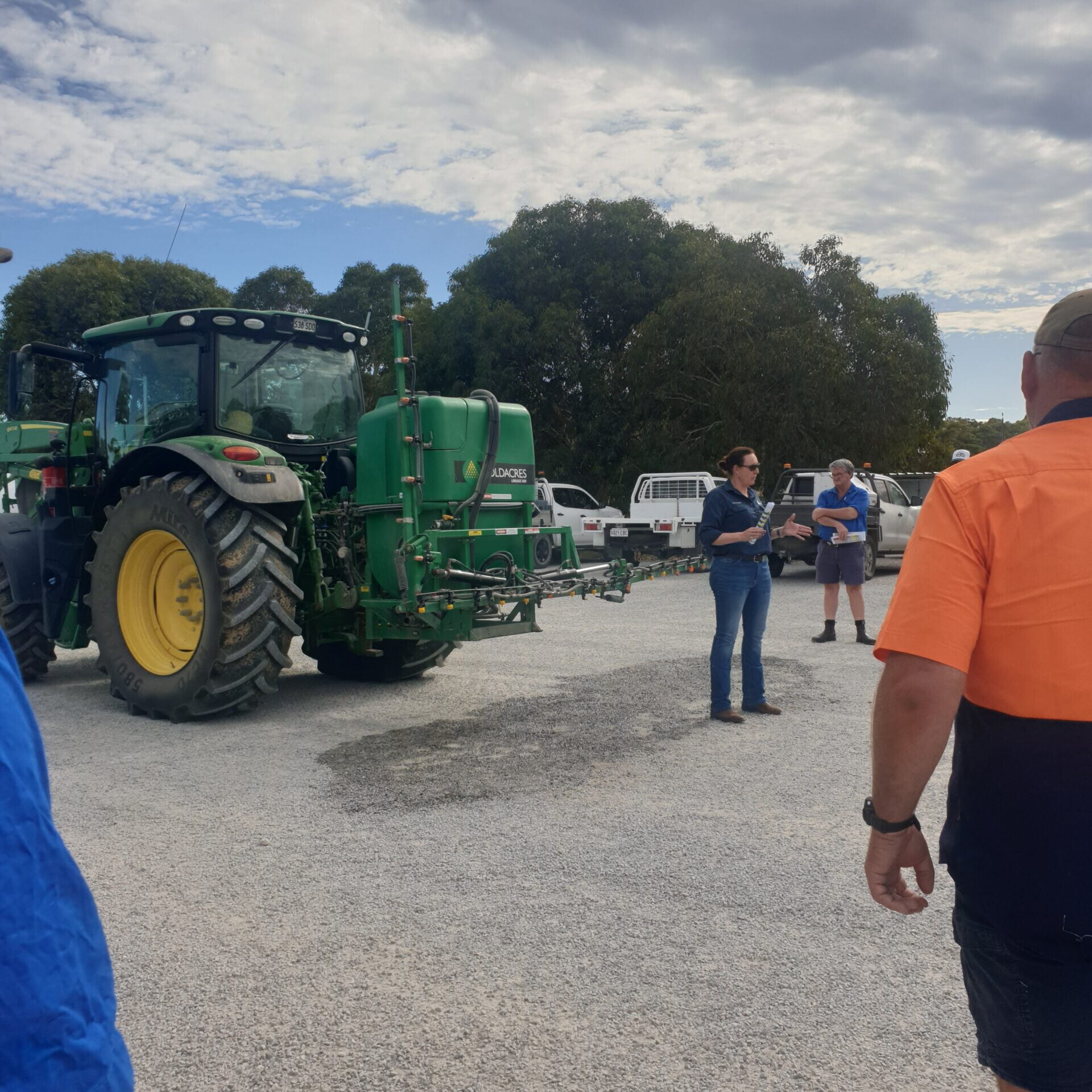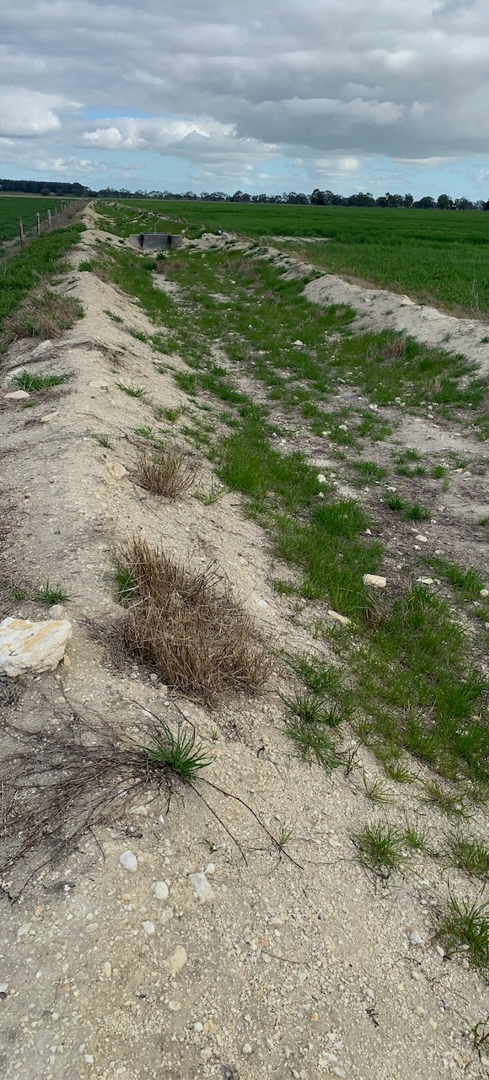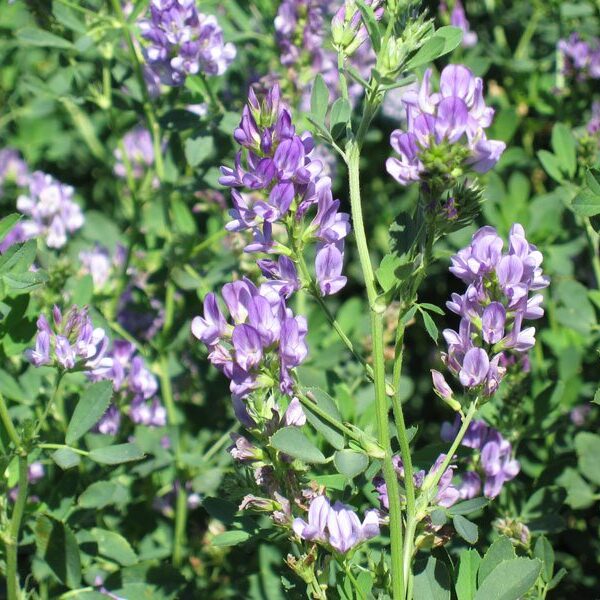Smart Weed Control in Lucerne Seed Production Systems in Australia
Lucerne growers consistently rank weed and pest management as major production issues. It is critical to manage weeds effectively in seed crops to be profitable, achieve good seed yield and to meet certification requirements. Growers must use herbicides smartly in conjunction with other strategies or risk losing control of weeds.
On this page you will find specific strategies around sustainable herbicide use and effective weed management in lucerne along with useful links to websites, fact sheets, articles, manuals and other information that relates to herbicide resistance, spray application, drift management, application equipment, specific weeds and a variety of other topics.
Click on the links to access the final report on the AgriFutures Australia funded research project Final Report: Herbicide resistance in lucerne seed production systems in the southeast of South Australia and the Fact sheet: Smart weed control in lucerne seed production systems in Australia | AgriFutures Australia
.
The development of these resources has been supported by AgriFutures Australia.
Test Weeds for Resistance
Know your enemy and identify opportunities for individual paddocks. Know what herbicides will work and what won't work in your paddock. Survival may not be resistance.
Key Points
- There are two main tests - The Quick Test and The Seed Test.
- The Quick Test is done using weed plant samples collected in-crop and provides the results within a few weeks.
- The Seed Test is done on weed seed samples, usually collected at maturity and the results take a few months depending on dormancy and seed volume supplied.
- There are three weed seed testing services in Australia: Visit the website/s for details about the services offered, costs and specific instructions before submitting samples.

Optimise Spray Efficacy - Make every droplet count!
Optimising spray efficacy will improve the chances of killing weeds and reduces the chances of weed resistance developing.
Key Points
- To maximise effiacacy and reduce spray drift, follow spray application guidelines to ensure correct speed, nozzles, water volume, boom height and adjuvants are used.
- Always use the largest spray droplet feasible that gives the highest efficacy.
- Know your water quality. Many herbicides perform better when a water conditioner is used.
- Avoid spraying during inversions (particularly from evening through to early morning), in high temperatures, frost or dew conditions, and when wind speed is below 5km/hr or above 20km/hr.
- Understand what environmental conditions favour control by different herbicides and use that to maximise spray efficacy.
- For some active ingredients there are many products available. As a general rile of thumb, buy herbicides from reputable companies. Herbicides that cost less are usually due to inferior solvents and surfactants resulting in poor performance especially under sub-optimal environmental conditions.
- Spray post-emergent herbicides on younger plants to maximise weed kill.

Stop Seed Set
Aim for 100% weed control and monitor survivors post weed control. Implement farm hygiene measures to ensure weeds do not spread through irrigation channels, roadsides, fencelines and via vehicles.
Key Points
- Control of crop margins: Relying on herbicides that are used in lucerne to control weeds growing along crop margins such as check banks, fence lines, irrigation channels and drains is not recommended. Use of appropriate alternatives i.e., alternative mode of action herbicides or mechanical methods should be practiced.
- Seed-set control: Consider hay or silage production in high pressure situations. Removing weed seeds from a paddock is an effective way to reduce weed burden. Most weed species only have a short seedbank life so a couple of years of seed-set control may significantly reduce the weed burden. If there is an opportunity to spray weeds at the flowering stage e.g., ryegrass or sowthistle to sterilise seed without affecting lucerne seed production this can be an effective strategy. Spray topping can still be effective on resistant individuals by reducing the vigor of the developing seed thereby affecting its viability for the following season. Seed capture at harvest is used on many broadacre crops but to date has proven difficult to integrate into lucerne seed production. An alternative is to concentrate offal in to windrows and bale, removing weed seeds from the paddock.
- Farm hygiene is often overlooked: Movement of weed seeds with machinery, vehicles, stock and even clothes can transfer resistant weeds. If possible, harvest the "dirtiest" lucerne paddocks last and ensure harvesters are well cleaned if harvesting a crop with high weed numbers.

Grower and Advisor Resources
There is a wide range of resources available on herbicide resistance and management in Australia. The resources given predominately relate to southern grain cropping production systems and provide general information that may either be transferable, or may be suitable for adaption, to perennial lucerne seed production.
Herbicide Mode of Action (MoA) Information
Croplife Australia has comprehensive information on herbicide MoA classifications including new global numerical alignment, active constituents, resistance risk (high/moderate) and trade names.
Herbicide Resistance Testing
Plant Science Consulting (PSC) is an Adelaide based company specialising in Herbicide Resistance Testing. PSC offers a wide range of tests including herbicide resistance testing of weeds as seeds and plants (Quick-Test).
Charles Sturt University (CSU) conducts screening of weed populations for resistance to commonly used herbicides. At present, weed species that are routinely screened include annual ryegrass, wild oats, barley grass, brome grass, and wild radish.
University Western Australia (UWA) Resistance Testing program tests weeds (ryegrass, wild radish, brome grass and barley grass) for resistance to standalone herbicides and mixtures.
Weed Identification and Information
The Common Weeds of Grain Cropping – The Ute Guide aims to help growers, advisers, researchers and students to identify the most common weeds of grain cropping systems in Australia.
The Integrated Weed Management Manual provides information on the latest tools and techniques to help manage current weeds and weeds of emerging economic importance, and at the same time maintain the arsenal of herbicide modes-of-action into the future.
Websites
WeedSmart is an industry-led initiative to enhance on-farm practices and promote the long-term sustainability of herbicides and seed traits in Australian agriculture. Resources include the extensive WeedSmart learning hub (webinars, podcasts, articles and courses).
GRDC invest in research, development and extension to create enduring profitability for Australian grain growers. Resources include factsheets, podcasts, publications and technical articles on herbicide resistance management, herbicide behaviour and best practice spray application i.e., weather conditions, adjuvants and nozzles.
The Australian Herbicide Resistance Initiative (AHRI) is a national research and communication team based at the University of Western Australia. AHRI research focuses on crop science, weed science and herbicide resistance in the Australian grains industry. Resources include education, research, articles, publications and podcasts.
CropLife Australia represents the innovators, developers, manufacturers, formulators and registrants of crop protection and ag-biotechnology products. They are committed to the safe and responsible management of the industry’s products. Resources include Herbicide MoA information and Resistance Management Strategies that supports farmers’ adoption of resistance management.
Mary O'Brien is a private consultant conducting spray application and drift management workshops around Australia. Resources include information that relates to spray application, drift management and application equipment.



